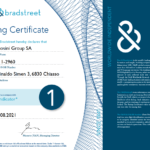WHAT ADVANTAGES AND DISADVANTAGES DOES EU CUSTOMS CLEARANCE OFFER OVER CONVENTIONAL IMPORT INTO THE EU?
Advantages:
If a European company imports goods from a third country (e.g. Switzerland) in a conventional way and declares these goods for “free circulation” in the EU, import turnover tax must be paid for these goods. In the case of large amounts this can cause cash flow problems.
No import turnover tax is levied in EU customs clearance. In addition, according to shippers, taxes on customs operations should be reduced because costly customs operations in the destination country are avoided through EU customs clearance.
As a result of the subsequent payment of tax on domestic purchases (for taxation of the intra-community purchase in the country of destination), the customer has a liquidity advantage.
Disadvantages
:
If a company imports goods from a third country (e.g., Switzerland) as part of EU customs clearance, it must prove the tax exemption of the intra-EU delivery at the accounting and documentation level. If, e.g., the customs authorities determine that the VAT identification number of the named consignee was invalid (proof at the accounting level), the Customs Office can retrospectively claim import turnover tax. The importer (= supplier) then bears the risk of proof of tax exemption. This includes documentary proof that the goods were transported from one EU country (e.g., Germany) to another EU country.
An additional problem is that EU customs clearance is often requested even if the necessary legal preconditions are not met. In most cases, the assumption that an intra-Community delivery takes place after import is missing.
If the preconditions for requesting EU customs clearance are not met, the import must be done following the “normal” procedure in which customs imposes import taxes.
Cases in which EU customs clearance is not allowed (non-exhaustive list):
Contract processing
Swiss supplier A is registered in Germany and has a German VAT identification number (USt-IdNr.). He sends an object from Switzerland to contract worker B in Austria to repair it. To import the item to Germany.
There is no intra-community delivery following importation. A supply presupposes that the power to economically dispose of the object is granted to the recipient. In this case this is not the case. The object remains available to A and is left to B only for repair. Import into Germany is subject to German import turnover tax.
Experience shows that EU customs clearance is often undertaken in such cases by employing the VAT identification number of the contract worker. This is not permitted.
Delivery under a work contract
Swiss supplier A is registered in Germany and has a German VAT identification number (USt-IdNr.). He provides a ready-to-operate plant in Austria. Items provided include mounting and commissioning. A imports plant components to Germany and then transports them to Austria.
There is no intra-Community delivery following importation. The object of delivery is the ready-to-operate plant and not its individual components. The supply is subject to tax in Austria, because this is where the plant is assembled. The import of plant components into Germany is subject to German import turnover tax.
Experience shows that EU customs clearance is often undertaken in such cases by employing the customer’s VAT identification number. This is not permitted.









